How much grapefruit is too much grapefruit? Asking for a friend (hi, it’s me, I’m the friend). Because this flavor-packed bundt uses two entire grapefruits, including the zest and the juice as well as grapefruit extract in the cake itself, which is then soaked with a flavor-packed grapefruit cordial and drizzled with a grapefruit glaze to top it all off.
Made with olive oil and greek yogurt for flavor, moisture and tang, with a plush, pound cake-like texture and subtle notes of extra virgin olive oil that perfectly compliment the bright grapefruit flavor, it’s the perfect springtime bake to mark the transition from winter to spring! And did I mention that since it’s an oil-based cake, you don’t even need an electric mixer to make it? That’s what I call winning.

Let’s pack as much grapefruit flavor as humanly possible into a bundt pan (not an easy undertaking, as grapefruit is a tricky flavor to get to come through in baked goods). To achieve maximum grapefruit flavor, I ended up using grapefruit zest, fresh-squeezed juice, and grapefruit extract in the cake itself, then soaked the warm cake with a bright and tangy grapefruit cordial (which is basically like a sugar syrup, just uncooked so the grapefruit flavor stays super bright), and finally glazed it with an elegant drizzle of pastel pink grapefruit glaze.
That’s two whole grapefruits in there in one form or another.
Even with what seems like an excessive amount of grapefruit, the flavor is actually quite mellow (it’s not going to punch you in the face), but still prominently and pleasantly grapefruit from the very first bite.
By the second bite, you’ll begin tasting the the grassy, peppery notes of the olive oil, which plays beautifully with the almost floral grapefruit, and just the right amount of sugar to offset any bitterness that might result from having so much grapefruit packed in to a single cake.


The recipe is loosely based off of my lemon olive oil loaf cake recipe, with grapefruit instead of lemon, yogurt instead of heavy cream, and adjusted proportions to fit a standard-sized bundt pan instead of a loaf.
I ended up increasing the amount of olive oil and yogurt, to account for some of the fat and moisture lost by replacing the heavy cream in the lemon cake with Greek yogurt. Fat means flavor, yes, but also moisture: too little fat and a cake will be unpleasantly dry. My first few experiments with this recipe were just a little bit dryer than I like in cake, hence the extra oil and yogurt in the final iteration.
I will note that while Greek yogurt definitely has less fat than heavy cream, be sure you are using WHOLE Greek yogurt here, as low or nonfat will result in a dry cake. And I don’t care how much people hate the word moist, we hate a dry cake even more. Trust me on this one.
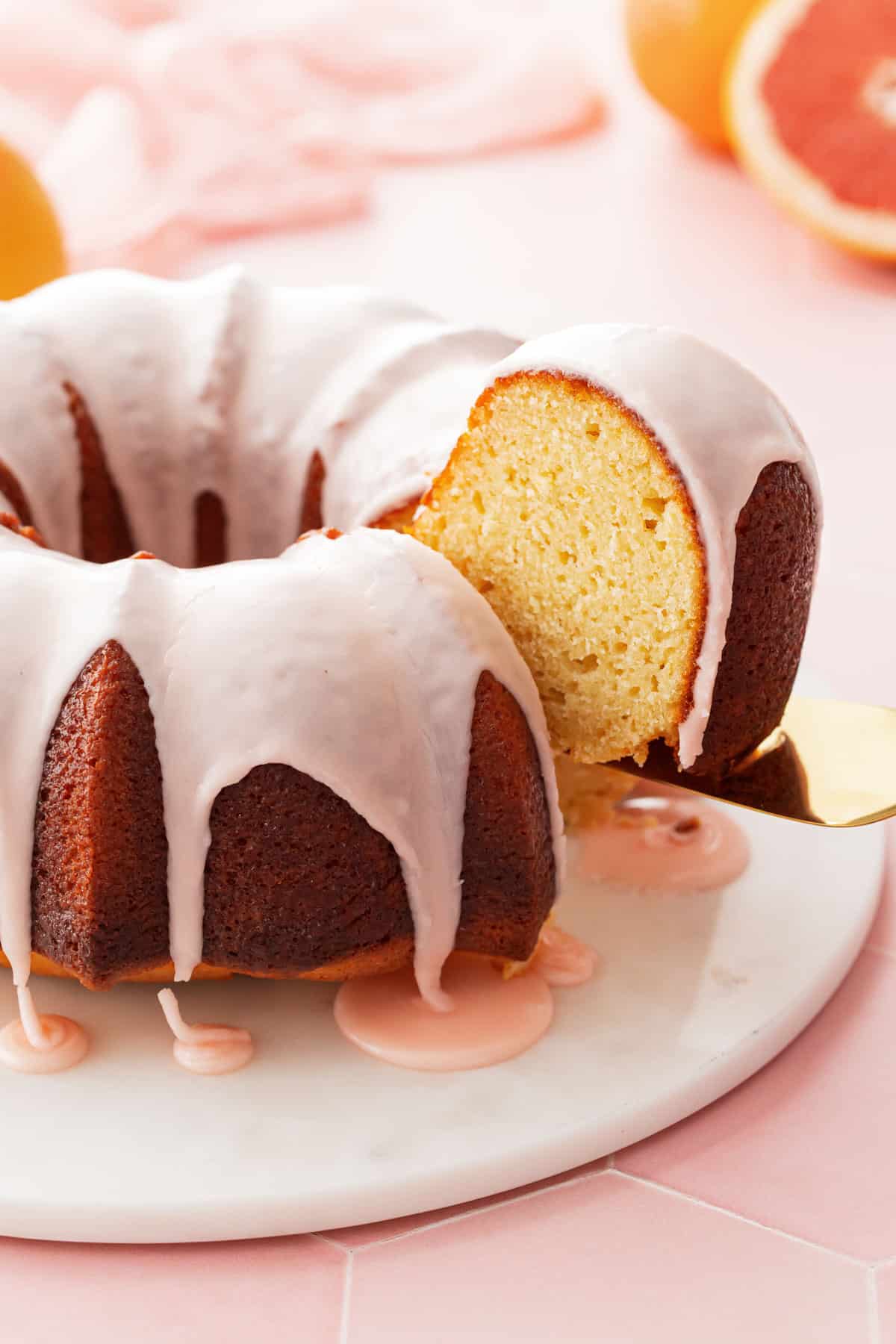

Because we are working with less fat here (even with the increased proportions), it was doubly important that the texture and crumb of the cake be spot on.
I ended up replacing a small amount of the all purpose flour with almond flour, which helped to give the cake a more rustic, plush texture that I found much more pleasing. Sometimes you want a really tight, almost cottony crumb in a cake, but this is not one of those times.
The final texture is closer to a pound cake than a yellow birthday cake, though not quite as dense. You’ll also notice the textural differences of this oil-based cake versus a butter-based one: it definitely leans more muffiny as opposed to cakey (oh chill out spellcheck, I totally made up those words and I like it that way).
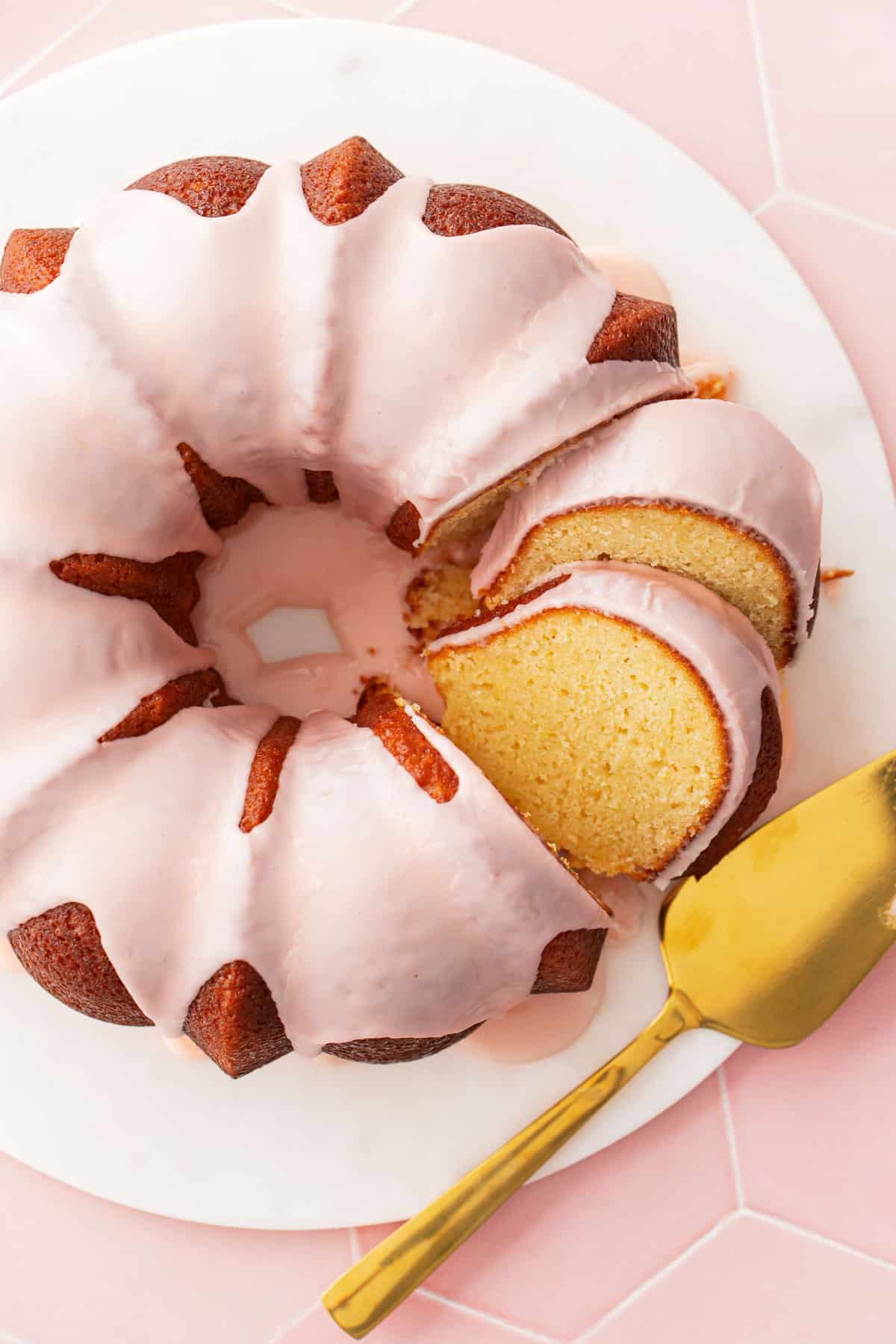

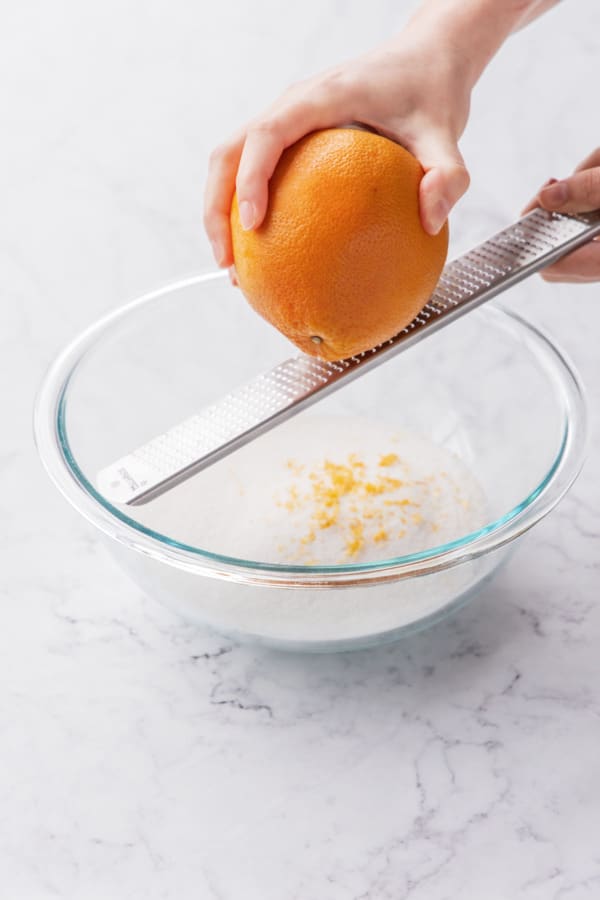

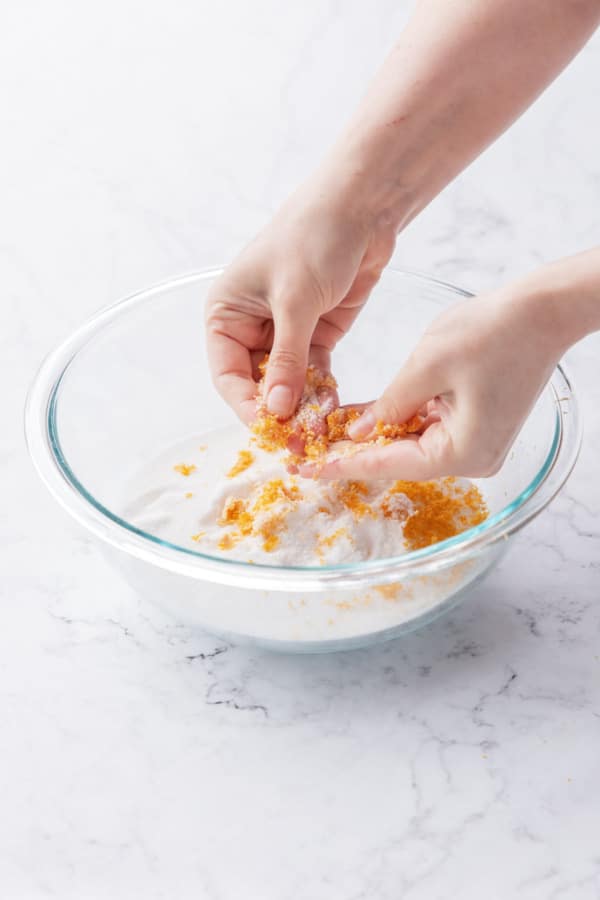

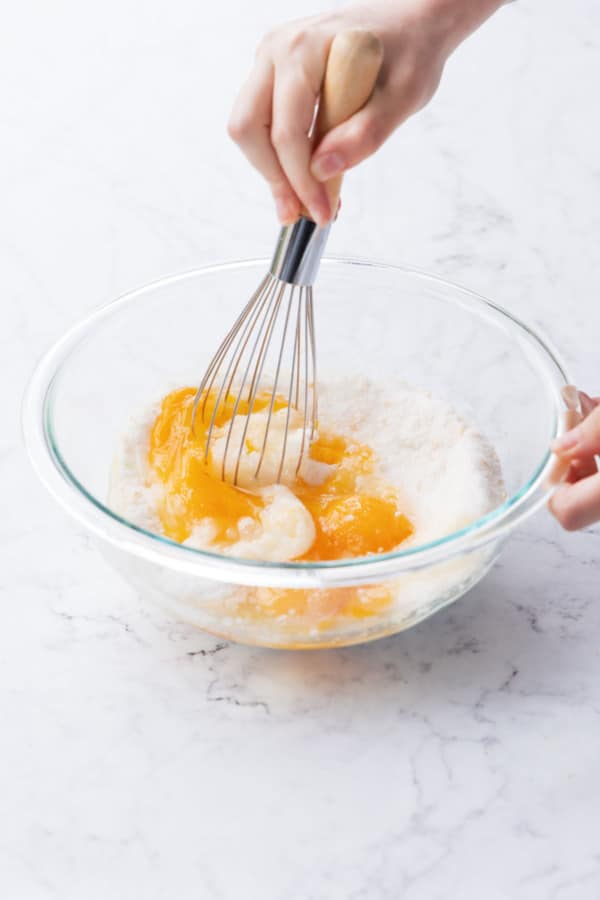





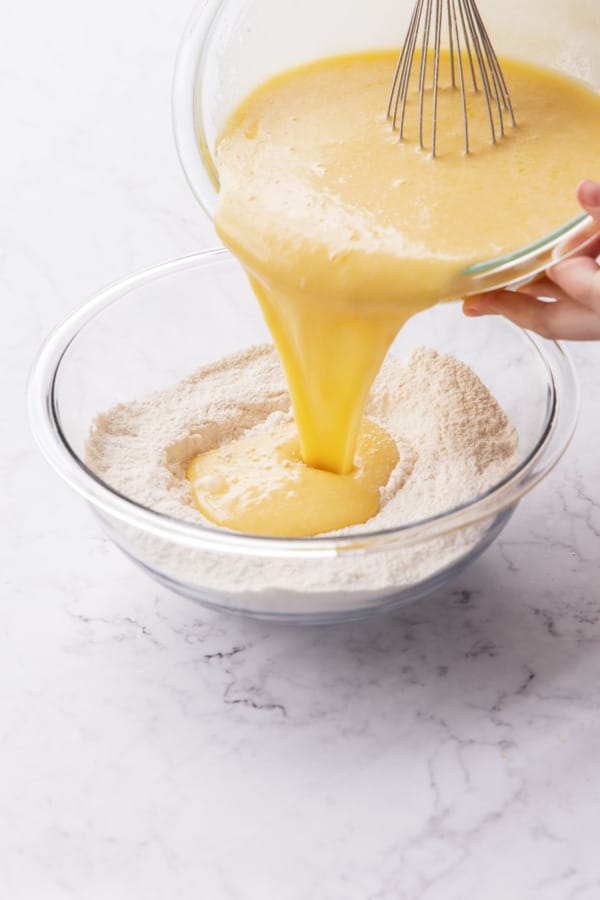



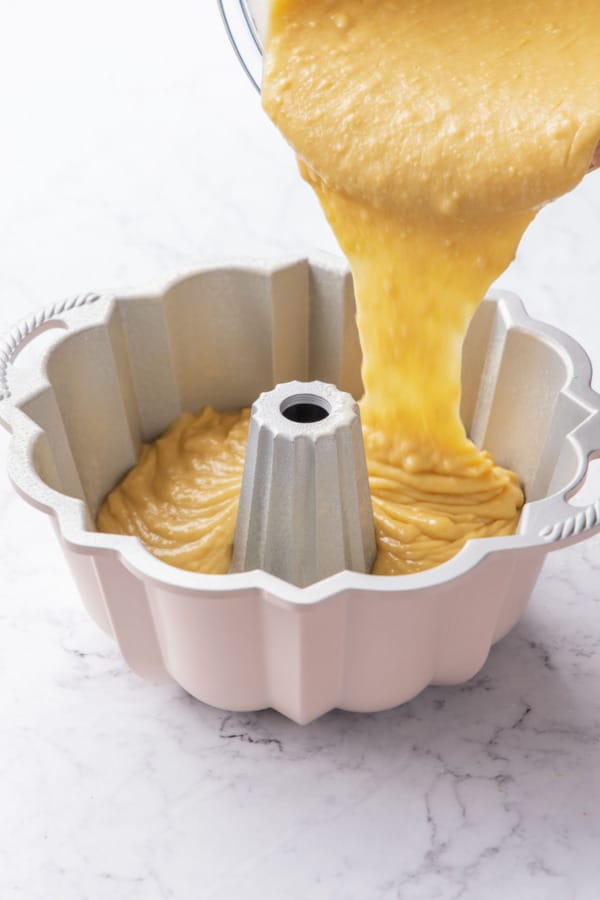

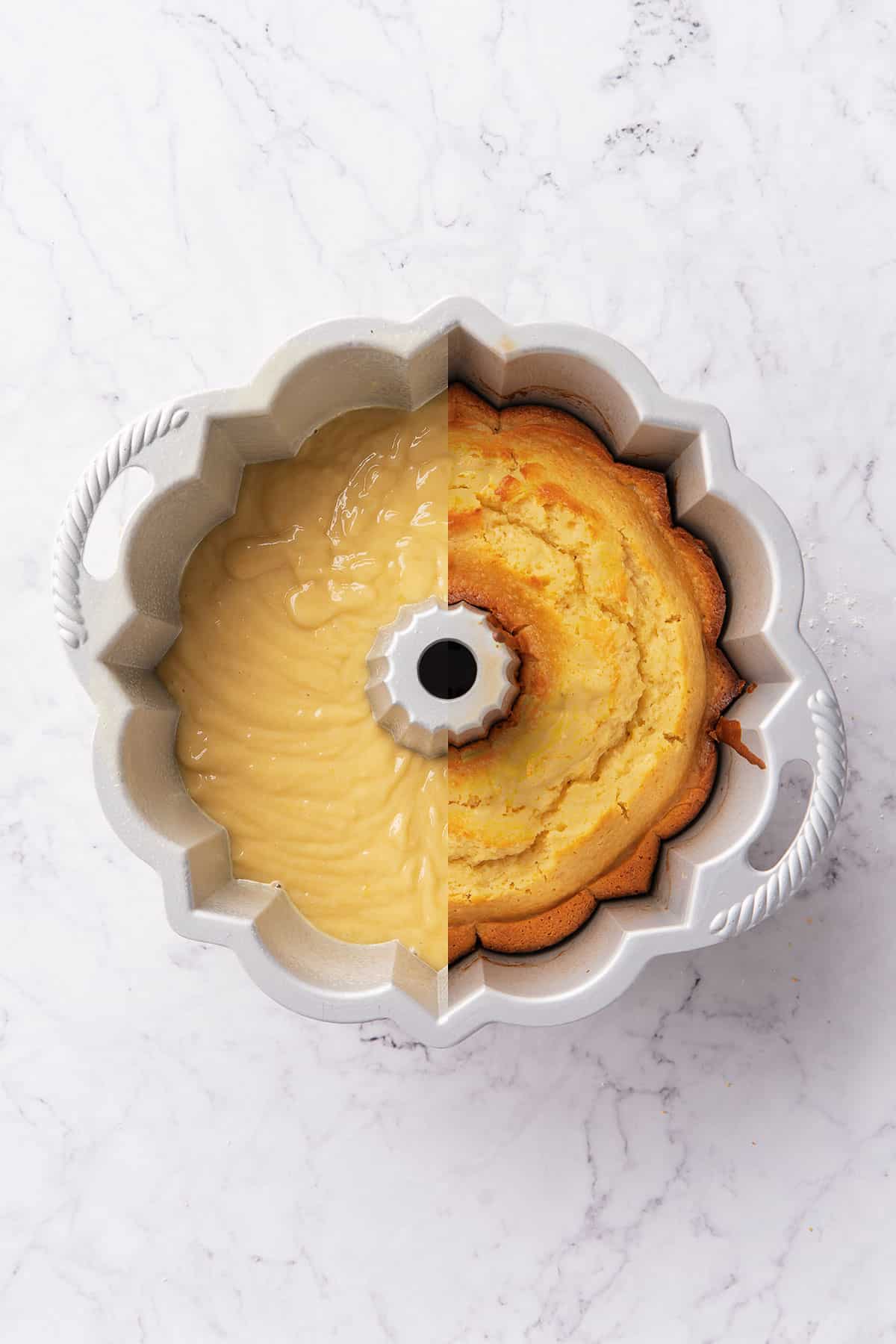

A cordial greeting.
Using a fresh grapefruit cordial instead of a sugar syrup helps infuse the cake with bright—not bitter—grapefruit flavor.
A cordial (also sometimes called a squash) is essentially made by macerating sugar, citrus juice and zest together for a period of time, no heat involved. In my numerous tests for this cake (with the aim to amplify the grapefruit flavor as much as possible without bitterness) I found that heating the grapefruit juice with the sugar—even briefly—resulted in more bitterness than if no heat were involved whatsoever. And reducing the grapefruit juice? Bitter central.
When comparing the two cakes, one soaked with syrup and one soaked with cordial, the difference was glaringly obvious. So cordial it is!
The process to make this grapefruit cordial is identical to Taylor’s lime cordial recipe, just with grapefruit instead of lime. Ideally it will sit overnight to really maximize the flavor infusion, but a few hours will do in a pinch.
In addition to brushing the still-warm cake with the bright and tangy cordial, I’ve also used the cordial as the liquid in the powdered sugar-based glaze instead of fresh juice. Surprisingly, that cloying “powdered sugar taste” that often plagues glazes and frostings was nearly nonexistent when mixed with the grapefruit cordial and a pinch of salt, compared to batches mixed with sugar syrup and plain grapefruit juice. I can’t quite explain why, only that it was a noticeable difference and one of the reasons we opted for the grapefruit cordial instead of a sugar syrup or straight juice.
If you have any leftover cordial, it makes a great cocktail mixer (just saying).


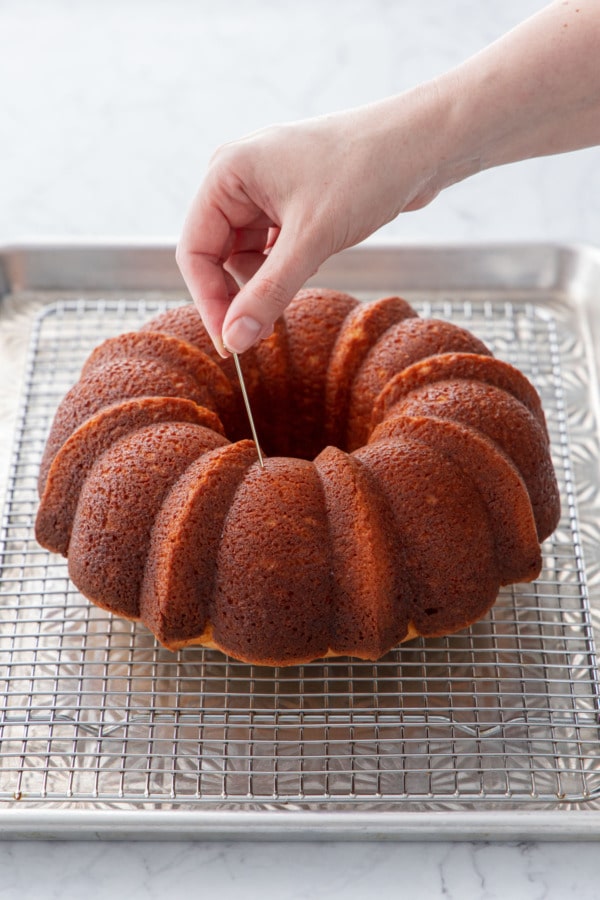





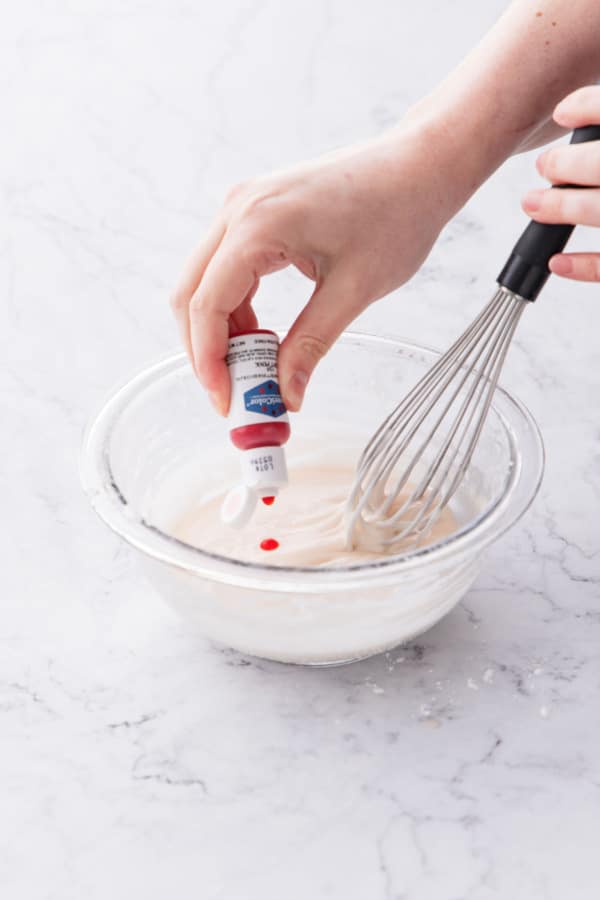

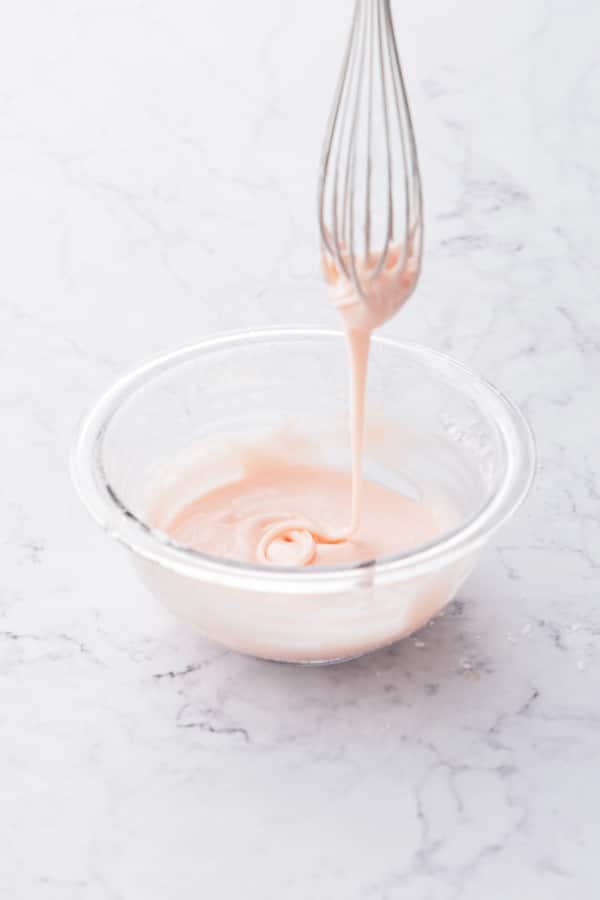





The icing on the cake (literally)
The glaze is simply powdered sugar mixed with a bit of the grapefruit cordial, and a pinch of salt to brighten the flavors and tamp down the bitterness.
You want the glaze to be pourable to get a nice drizzle effect, but not so thin that it all drips off the cake before you have a chance to slice it. I ended up using 5 tablespoons of cordial, which was *slightly* too much (the puddles on the cake plate shouldn’t have been quite so big). I recommend starting with 4 tablespoons of cordial, and then adding more, 1/2 teaspoon at a time, until you achieve the right consistency.
To test the consistency, lift the spoon or whisk out of the glaze and let it drizzle back into the bowl. The ribbons should absorb back into itself in about 5 to 6 seconds. If the ribbons disappear more quickly, add a bit more (sifted!) powdered sugar. Conversely, if it’s so thick that it glops rather than drizzles, add a bit more cordial or juice, 1/2 teaspoon at a time, and test again. When it comes to glazes like, this a little liquid goes a long way!
Depending on the natural color of your grapefruit, you may want to add a drop or two of pink food coloring to the glaze for a more obviously pink color. I used 2 drops of Americolor soft pink. This is totally optional though, it’s lovely without too!
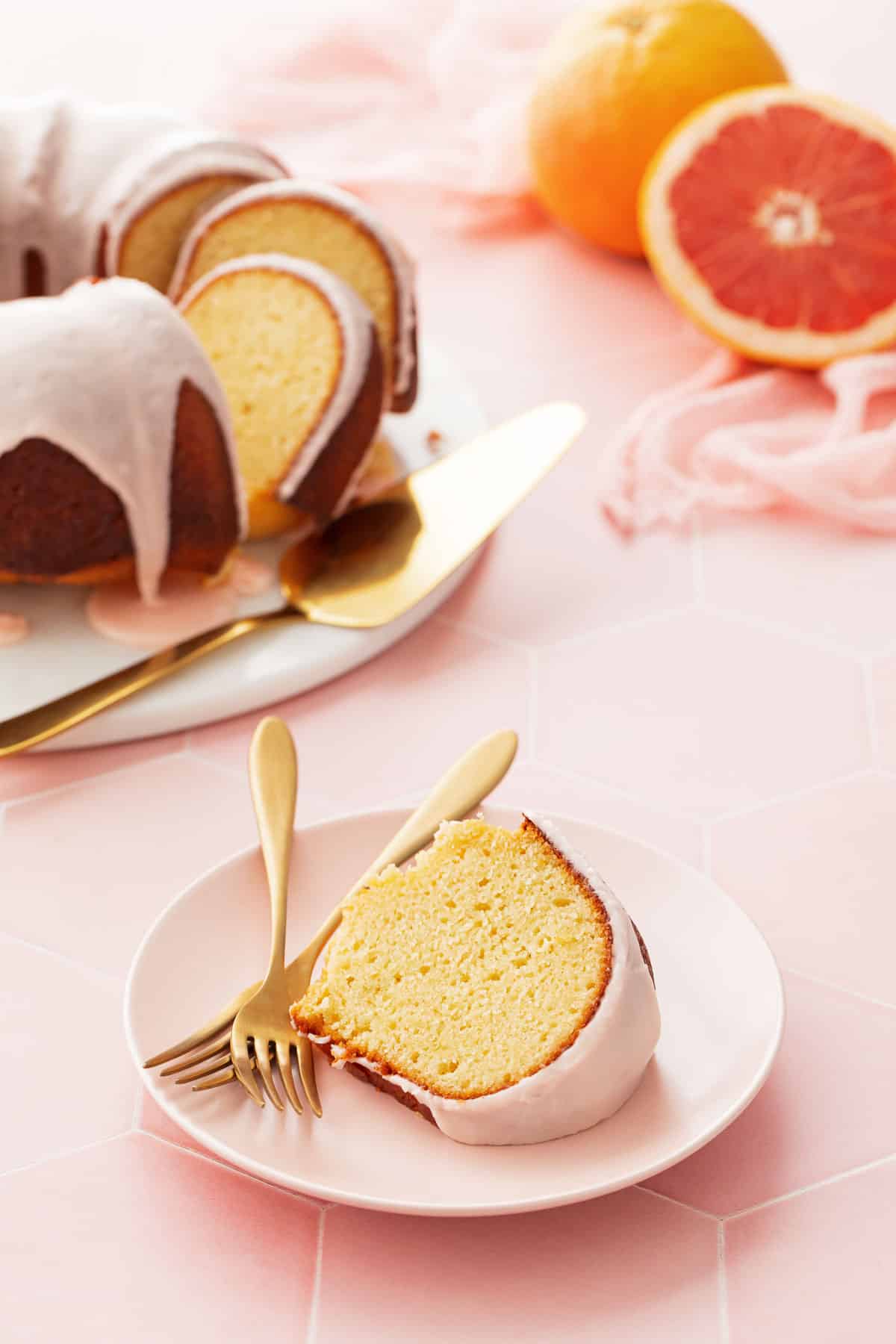

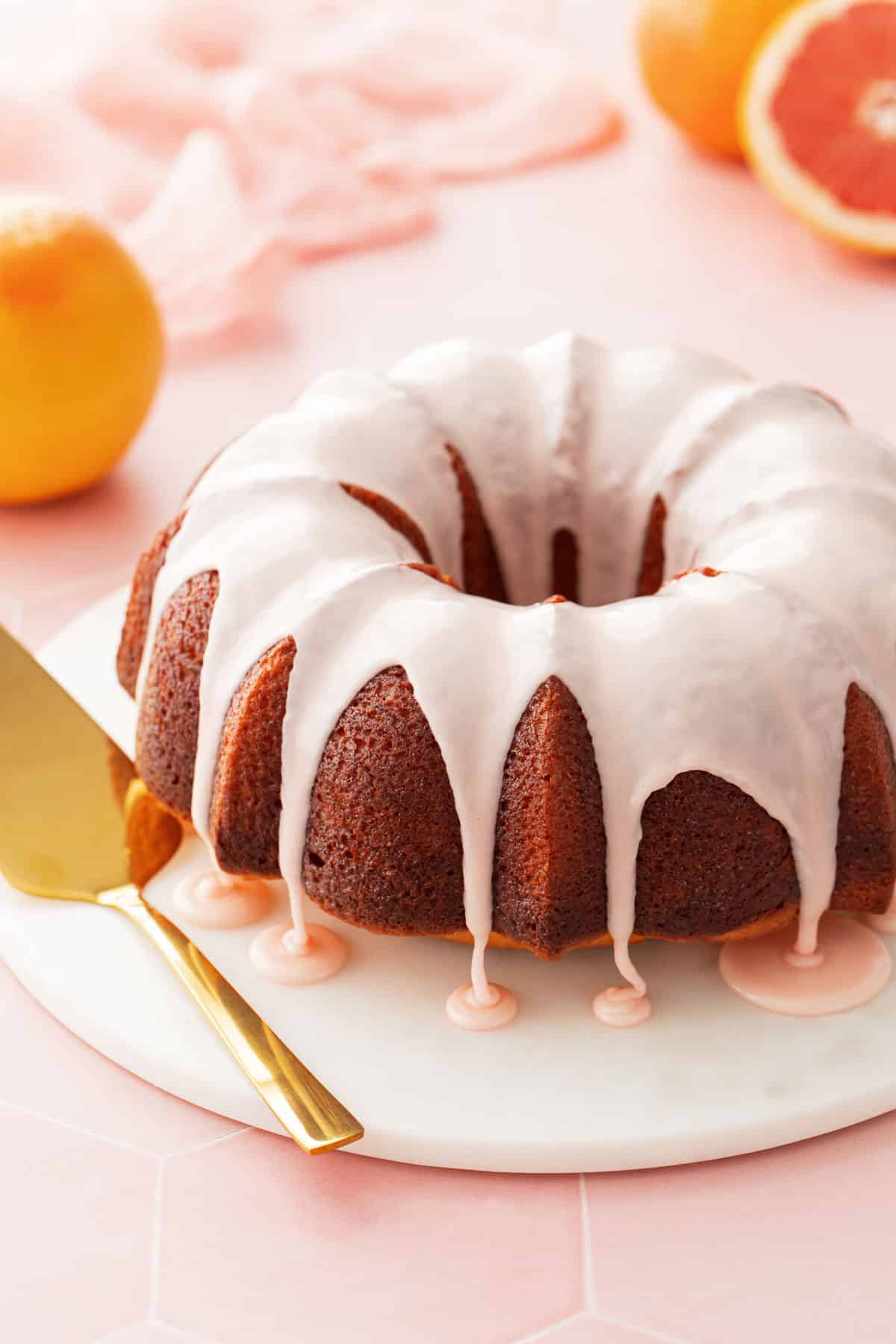

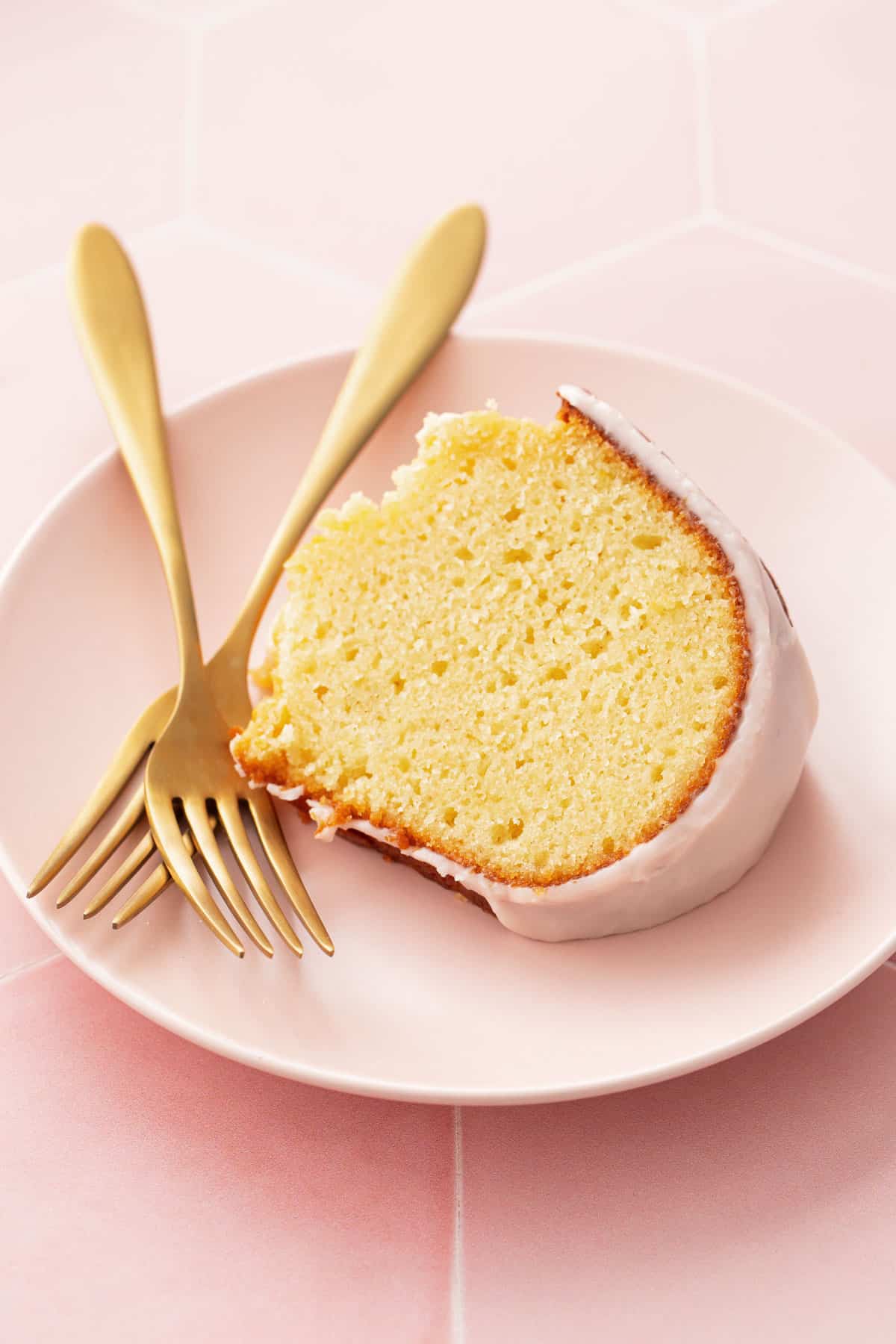

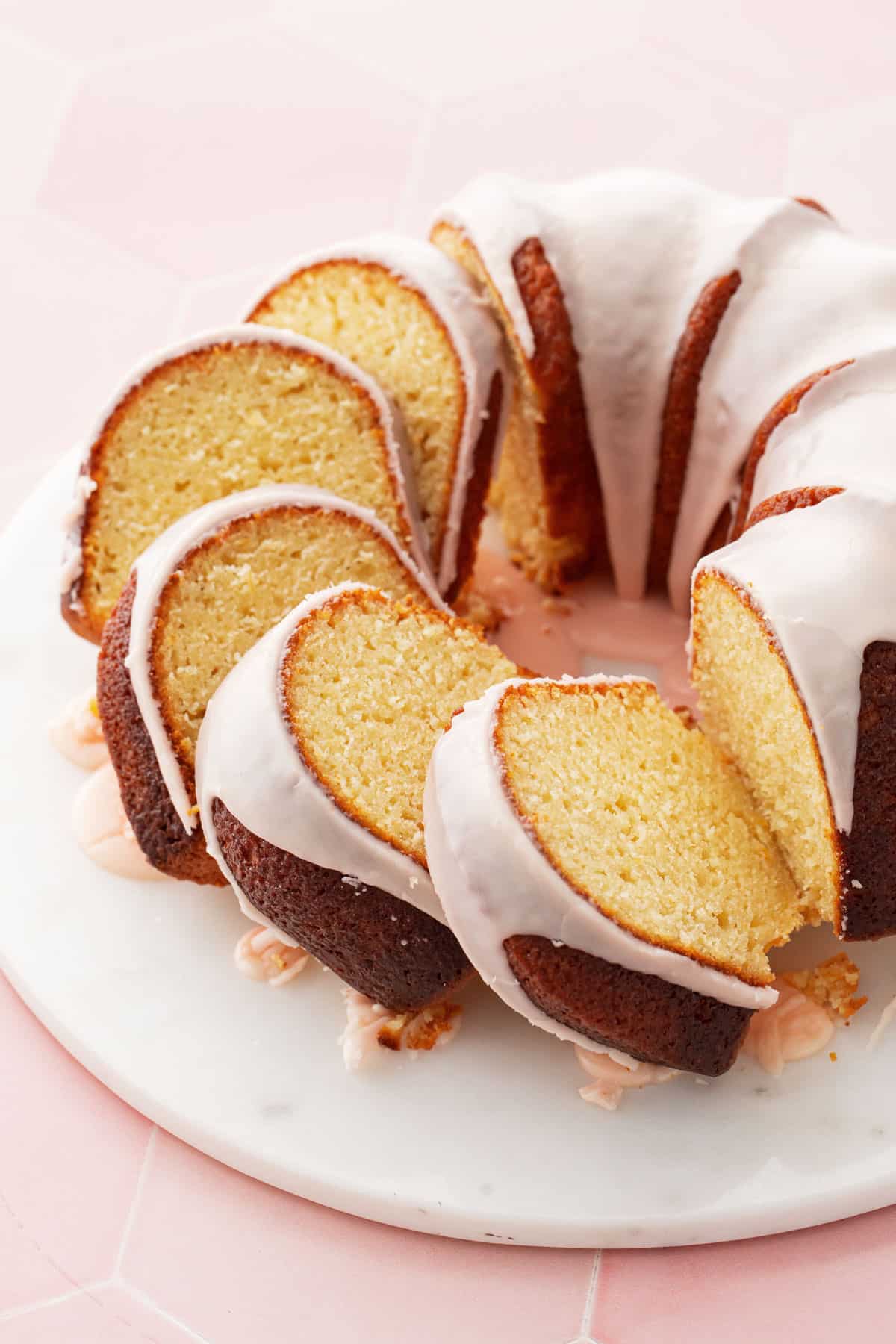

Ingredient Notes & Substitutions:
Grapefruit: You’ll need 2 juicy grapefruits for this recipe (red or pink, either works), one to make the cordial and the other for the cake itself (you may have a little juice leftover, but will definitely use all of the zest). You could probably make this same recipe with oranges too (I think blood oranges would be lovely). But if you’re looking for lemon, I’d recommend following my lemon olive oil cake recipe instead.
Grapefruit extract: even with grapefruit zest and juice in the batter, the grapefruit cordial soak, and a grapefruit glaze, I still wanted more grapefruit flavor. Hence the addition of a bit of grapefruit extract. This is optional and you can leave it out, but if you really want to maximize the grapefruit flavor, it’s worth tracking down. (Be sure to buy a grapefruit extract intended for culinary use; there a a lot of similarly-named supplements that come up in searches that are not the same thing.)
Greek yogurt: please use whole/full fat Greek yogurt for this recipe. That little bit of fat goes a LONG way to making a moist and tender cake; using low or nonfat yogurt will result in a cake that’s overly dry.
You could also sub in sour cream if you’re looking for an extra lush cake (all that fat is going to make for a beautifully moist cake).
Olive oil: use a medium quality, extra virgin olive oil; don’t waste your really good stuff here as it won’t make an obvious difference. If you can, find an olive oil with more of a sweeter, fruity flavor palate than a spicy/peppery one. You will taste the olive oil in the final cake, albeit subtly, so pick one you like. If you prefer a less prominent olive oil flavor, you can replace all or some of the olive oil with a light olive oil or a neutral vegetable oil instead.
Flour: I used unbleached AP flour in this recipe. Cake flour is often times too ‘cottony’ for my tastes, at least for this kind of cake I want a little more substance.
Almond flour: a small proportion of almond flour gives the cake a more rustic, plush texture. It really makes a huge difference in the final cake, however it can be replaced with an equal amount of AP flour instead if you have no other choice (the final cake will be a little drier).
Grapefruit Olive Oil Bundt Cake
This perfect springtime cake is packed with grapefruit flavor, including zest, juice and extract in the cake itself, soaked with a flavor-packed grapefruit cordial and drizzled with a grapefruit glaze to top it all off. Made with olive oil and greek yogurt for flavor, moisture and tang and a plush, pound cake-like texture.
-
To make grapefruit cordial, combine juice, sugar, and zest in a bowl. Cover and let steep for at least a few hours or ideally overnight. The sugar should be completely dissolved. (If making more than a day ahead of time, let sit for 24 hours then refrigerate where it will keep for up to a week.) Let come to room temperature before using (it will also need to be strained before you use it to remove the bits of zest).
-
To make the cake, preheat oven to 350 degrees F. Grease a standard 12-cup bundt pan (I used baking spray, but you can use butter/flour or cake pan grease too).
-
In a large mixing bowl, whisk flour, almond flour, baking powder and salt until evenly incorporated; set aside.
-
In another bowl, combine sugar and grapefruit zest. Rub the zest and sugar between your fingers to release the oils and break up the clumps of zest.
-
Add eggs and whisk vigorously until completely smooth (there should be no slimy streaks of egg white visible anymore), then whisk in olive oil, yogurt, grapefruit juice, and vanilla and grapefruit extract until fully incorporated.
-
Make a well in the center of the dry flour mixture. Add wet ingredients and whisk until just combined and no streaks of dry flour remain (there may be some small lumps, just make sure there aren’t any large ones or pockets of dry flour left).
-
Pour batter into prepared bundt pan. Bake for 50 to 60 minutes or edges are golden brown and a skewer inserted at the thickest point comes out mostly clean with just a few moist crumbs attached (no gooey batter).
-
Let cake cool in the pan for 10 to 15 minutes (just until it’s cool enough to handle), then invert onto a wire rack; it should release cleanly. Set the wire rack inside a baking sheet to catch any overflow.
-
At this point your cordial should have been sitting for at least a few hours, if not overnight. Strain through a fine mesh sieve to remove any remaining bits of zest. You should have a little over ½ a cup.
-
Poke all over the surface of the still-warm cake using a thin skewer or long toothpick. Using a pastry brush, brush ¼ cup of the cordial over entire outside of the cake, including inside the center hole. It should soak in with much overflow being caught in the baking sheet underneath (if you have a lot of drips, feel free to scrape it up and brush it back on the cake).
-
Let cake cool completely, or, if making ahead of time, wrap the cooled cake in plastic wrap and refrigerate overnight or until ready to glaze.
-
For glaze, sift powdered sugar into a bowl. Add 4 tablespoons of cordial and whisk until smooth. Continue adding cordial, 1/2 teaspoon at a time, until the glaze reaches a nice pourable consistency (if you lift up your whisk and drizzle a bit back into the bowl, it should absorb back into itself in about 5-6 seconds). Conversely, if the glaze is too thin, you can sift in more sugar as needed.
-
Pour glaze over top of cake, letting it drip down the sides on its own. Let sit for 15 to 30 minutes until glaze is set before slicing and serving.
-
Cake will keep, wrapped in plastic wrap in the refrigerator, for up to 1 week.
All images and text © for Love & Olive Oil.
There may be affiliate links in this post. We are a participant in the Amazon Services LLC Associates Program, an affiliate advertising program designed to provide a means for us to earn fees by linking to Amazon.com and affiliated sites.



